Library Binding vs Hardcover – Which Is the Best?
One of the first issues you will need to deal with when buying or selling books is selecting the type of binding or cover. All sorts of binding methods are used to keep the content of a book protected and bound together. You can choose from hardback books, paperback books, trade bindings, library bindings, sewn books, stitched books, stapled books, glued books, binder books, and so much more.
Out of all these different formats, library binding and hardcover are probably the toughest and most durable forms of binding. What exactly is the difference between these two methods?
In this library binding vs hardcover guide, we compare the two methods so you can buy the type of book you need.

Library Binding vs Hardcover
What You'll Learn
The binding of a book is very important because it can make a huge difference in your level of comfort while reading the book, the durability of the book, and the overall look of the book. Library and hardcover binding are some of the best binding methods that you can choose from when you are shopping for books or if you want to get a book you wrote printed.
Let’s take a closer look at the main differences between these book binding methods so you can decide which you should choose.
What is Library Binding?
Library binding is a durable form of binding that is used for books that were intended to be used in a library setting. This form of binding is strong and durable so it can withstand many years of frequent use by different readers and offers a more organized look on large bookshelves .
Library bound is the most durable form of binding currently used. With this form of binding, the books receive an extremely hard exterior that has a slightly rough texture, and the bookend is firmly secured which forms an indentation line along the edge. Library binding can have a solid cover with book labeling on the bookend, or it can be decorative with full-color pictures all over the cover.
Books can be created with library binding but in some cases, old books that are donated to libraries undergo rebinding and are then fitted with a library-bound cover. Rebinding is a great solution for strengthening paperback books or for repairing old and damaged books.
This form of binding might be intended for library settings but is often used for other types of applications such as children’s books.
Types of Library Binding
There are two main forms of library binding which include original library binding and after-market library binding.
Original Library Binding
This form of binding is used when books are originally printed for library usage. Oftentimes when books are printed, a certain number of copies are created with library bindings. These books will look a bit different from copies that are intended for commercial purposes. This is because original library binding is much more rigid and more suitable for more frequent use compared to books that are only used by a single individual or a single-family.
After-Market Library Binding
After-market library binding is when books that used to be created in paperback print or hardcover design are rebound for library use. Libraries often send donated books to get this form of binding to enhance the strength and durability of the book so many readers can use the book without damaging it.
Library Binding Materials
The covering materials for library binding can differ, but in most cases, buckram is used for this form of binding. Buckram is made from 100% cotton and is often coated with acrylic – a type of coating that is UV resistant, water resistant, mold resistant, and insect resistant.
Buckram is usually fixed to binder’s board. This type of board is high in density although some library-bound books can also be made with laminated boarding or four-drinier boarding.
Library Binding Methods
Different methods can be used to bind library books together so they won’t fall out over time. Here is a quick look at the different methods used for creating library binding.
Sewing Through the Fold
With this type of binding, a series of pages are printed and folded in half. The folds of the signature (the group of paper sheets) are then sewn together – often by hand. All the signatures of the book are then put together and sewn again by machine to combine these folds into a firm book. Sewn-bound books are desirable because the book can easily lay flat on your desk when opened.
Over-Sewing
This method is often used when old books are restored and can be completed by hand or machine. The loose book pages are sewn together at the far left side of the page. This binding is strong but won’t allow the book to lay flat on a table.
Side Sewing
With side sewing, all pages are piled up together and a machine is used to create holes through the entire book side along the edge or margin. The machine also sews all of these pages together. The binding is firm, but books won’t lay flat on a desk.
What is Hardcover Binding?
Hardcover is the type of binding you see on commercially sold books you find in bookstores. The hardcover is a thick covering that protects the interior pages. Hardcover books are usually created by sewing pages together and gluing the folds to the spine of the book. The strong covers can be made from fabric-covered cardboard or leather-covered cardboard. The interior pages of hardcover books are also usually a bit thicker compared to the pages used in paperback books. This offers more strength and durability and is usually a characteristic of a higher-quality book.
Hardcover books are often produced with a dust jacket. This dust jacket is removable and usually includes the book cover design. Dust covers also often include writer biographies on the inside of the cover as well as a teaser of the book on the back. This dust cover is designed to protect the hardcover so it will stay in good shape for longer.
Hardcover Binding Materials
Hardcover books are usually created with a high-density binder board. This binder board is then layered with a gloss board, leather, buckram, heavy paper, or other types of fabric. These materials offer a very durable finish and a very pleasing look.
Hardcover Binding Methods
As with library binding, there are quite a few different methods that can be used to hold the pages of these books together. Here is a quick look at the main methods;
Case Binding
This is the most common form of hardcover binding. It involves printing pages in a specific order to form signatures that can be folded in the middle and stitched along this line. All individual signatures are then glued together to form a single book. With this form of binding, the book will lay flat on a surface when opened.
Double-Fan Adhesive Binding
Polyvinyl acetate glue (PVA) is used instead of yarn or thread for this form of binding. The pages are all lined up and small amounts of glue are placed along the page edge to keep the pages together. In this form of binding, the pages can start to fall out over time but the book will also lay nice and flat when open.
Over Sewing
As with library binding, the sides of pages are sewn together to keep all pages together. This method forms a solid bind but the book won’t stay open when laid on a desk.
Smyth Sewing
This method is also referred to as sewing through the fold and is more common in library binding. A machine is used to sew all the pages together at one edge. Unlike library books, the margins of these pages are wider so the book can, in fact, lay flat when it is opened.
Library Binding vs Hardcover: Final Thoughts
We hope that this library binding vs hardcover guide helps you choose the right binding option so your books will look great and stay in great shape for decades to come.
Ultimately we feel that library binding can be the most durable binding method and is ideal for books that endure frequent wear and tear, but this form of binding doesn’t offer the same luxury feel as hardcover books. Hardcover books can be a lot more beautiful since the hardcover can be made from a wide range of materials, but they won’t hold up quite as long.
If you need more advice on books, or if you are shopping for some great books, then you should check out some of the other guides we have on Book Summary Club . With our handy guides, you can find all the latest and best reads, and you can get the best tips to enhance your reading experience.
You should also check out..
🤙 your next step… 🤙.
Head across to one of the following pages for more goodies
🍕 Read our Blinkist review and become a member of Blinkist . Read or listen to 3000+ full version quality summaries!
🍕 Read our list of the best business books of all time
🍕 Read some more of our book summaries
🍕 See our top book summary apps
- Book Summaries
- Reading Lists
- Product Reviews
- Reading and Education
🤙 START HERE 🤙 About | Affiliate Disclosure | Review Your Book | Contact | Blog | Made in Sweden. Brought to you by coffee Copyright © 2019 BookSummaryClub.com. All Right Reserved. (whatever the hell that means)
- Privacy Policy
- Terms And Conditions

Library Binding Vs Hardcover: A Detailed Comparison
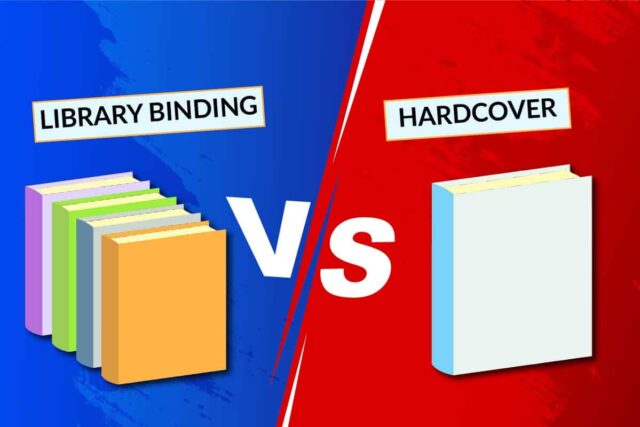
The binding your book has is essential. When you want to sell your book, you have to choose the proper binding for it. Even when you want to buy a book, you still consider the binding. Your choice of binding is determined by what the book is for and how long you intend it to last.
To compare library binding vs. hardcover, you have to understand that they are both critical. Even though library binding and hardcover are different, they both add value to books.
What Is Library Binding?
Library binding is simply a strong binding that is used for books to make them last the test of time in a library. It also enables books to remain in order whether it is in frequent use or not.
Books have different values and differences in usage. This is why books that are in libraries undergo rebinding when they get damaged. Library binding is suitable for rebinding books, as well as helping books remain durable. It is ideal for books that are important for the information they contain and don’t value as objects.
Even though library binding is primarily for books kept in libraries, it is usually used on books meant for individuals.
Types Of Library Binding
Library binding is of two major types. These are the original and after-market.
Original library binding; involves the binding of books meant for library use. The book is bound to withstand stress and is different from other versions of the same book. For instance, the publisher of a law book sent a library-bound copy of the book to the public library.
After-market library binding; involves rebinding books that were formerly paperback or hardcover books for library use. For instance, if a book sent to the library is paperback, the library sends a library binder to get it library-bound.
What Is Hardcover?
Hardcover refers to the rigid covering of a book that protects the papers within. A hardcover book contains pages sewn together and glued to the spine (the book’s middle). Hardcover books have strong covers made of either fabric or leather-covered cardboard. They usually have thicker pages than a regular book, meaning the paper is of high quality.
Some hardcover books also have a dust jacket. The dust jacket is a removable paper that slides over the book’s cover and helps protect the book’s outer parts. Hardcover books that don’t come with dust jackets have their cover designs printed directly on the cover board.
What Are The Methods Of Library Binding?
Methods used for library binding includes;
Sewing through the fold ;
involves attaching different signatures. A signature is a group of paper sheets folded in half and worked on as a unit. The signatures are connected one to another in succession to form the body of the book. And they are usually sewn through the fold by hand, with a needle and a thread. Furthermore, they are sewn by a machine, which has several needles and threads.
Books sewn through the fold have wide margins and can open flat. Pages cannot fall out unless they are torn.
Over-sewing ;
in this method, loose pages of a book are sewn together to form the book’s body. And this can be done by hand or using a machine. Tiny vertical holes are pierced through each page’s far left side, and then the pages are sewn together to form the book’s body.
It’s a strong binding for books five inches thicker. Also, the margins of over-sewn books are lesser. And when the book gets opened, the pages will not lie flat.
Side sewing:
This method attaches loose pages by sewing the book’s entire body through the side, along the margin. And it’s done in a single pass and then sewn by a machine. Side-sewn books will not lie flat, though their pages are held together tightly.
What Are The Methods Of Hardcover Binding?
Case binding: .
is a common method of hardcover binding. The pages are sewn together in signatures. The signatures are then glued together into a single body of a book. When the book gets opened, the pages will lay flat.
Double-fan adhesive binding:
This method uses polyvinyl acetate glue (PVA) instead of thread for the binding. It involves placing a small bead of glue on both of the pages after notching the spine’s edge. The book will have a wide margin and will open flat. Some types of paper do not hold adhesive well. And this will cause pages to come loose over time.
Over-sewing:
this method is the same as over-sewing in library binding.
Sewing through the fold (also known as Smyth sewing):
This is similar to sewing through the fold in library binding. Unlike over-sewing books sewn through the fold have wide margins and will open flat.
Materials Used For Library Binding
Covering materials:.
The most common covering material used for library binding is called buckram . Buckram is a 100% cotton material and durable. It can be coated with acrylic.
Acrylic coatings are water-resistant:
They are also resistant to ultra-violet light, insects, and mold.
The cover boards:
the most preferred board for library binding is called Binder’s board . They have a high density. Others are laminated boards and fourdrinier boards.
Components Of A Hardcover
The cover: .
This is what gives hardcover books their durability. It consists of cardboard and a gloss or Binder’s board. A strong paperboard covered with buckram or other cloth, heavy paper, or leather gets used sometimes.
The Endsheet:
This refers to a white piece of paper glued to the inside of the book cover.
The Flyleaf:
The flyleaf is an empty page next to the end sheet. It is not glued to the book cover.
The hinge is an area next to the spine that folds or bends when the book is opened. It allows the book to open freely without damaging the spine.
The Gutter:
The gutter is the space inside the page margins where the book is bound. Anything that appears in the gutter is often not visible. So, there has to be space to ensure everything is visible.
When To Choose Hardcover
If you are looking to choose a book cover, you should know that hardcover is best-used in some areas. For a book to be suitable for hardcover, it has to be above 30 pages. Also, it is ideal for books that you will keep for an extended period or memories, for example, art books and yearbooks.
It is also suitable for children’s books. Because it undergoes a high amount of stress and mishandling, it is a good choice for professional books such as medical books and self-published books.
How To Preserve Library Binding And Hardcover
- Store the book in a cool, dry, and clean environment. Do not expose the book to direct sunlight and reduce exposure to all light. If you are storing the books at home, use a room with minimal windows and low exposure to natural elements.
- Do not store the book near radiators and vents.
- Shelf books of similar sizes together, such that other books on both sides support a book’s cover. This also helps avoid indenting, which occurs when books of varying sizes are pressed on each other for a long time.
- Books with library binding are prone to collecting dust which can increase mold and lead to insect infestations. Dust the books regularly with a soft paintbrush or cloth in the opposite direction of the book spine.
- Keep books that are on shelves upright and not slanted. Please leave a little space in-between them to reduce pressure on the binding when removing them.
- You can protect the book further with a box.
- Conservation treatment can also help preserve books.
- Avoid stacking the books for a long time to reduce strain on the spine of the books.
- Don’t leave the books open, face-down for long to minimize strain on the spine.
- Books that are more than eighteen inches long or three inches deep (such as atlases) should lie flat. They can be stacked in groups of three on bookshelves or in containers.
- If you are storing books in boxes, make sure that the box will not allow UV light.
- Ensure that both hands are clean and dry before handling the books, so you don’t transfer the dirt to pages.
- When reading your books, it is important to limit how wide you open them to restrict their spine strain.
- Don’t use pens or markers on older books, so they don’t bleed to other pages. Use pencils instead, although note that all kinds of markings can devalue the books over time.
Differences Between Library Binding And Hardcover
It’s important to know that all library bindings are hardcover. But, not all hardcover is library binding.
Library binding is designed to withstand a lot of use and is generally more expensive than regular hardcover.
Library binding is not covered with a removable dust jacket. Sometimes, the cover looks heavy and unattractive. Dust jackets usually cover hardcover.
In terms of market price, library binding is more expensive than regular hardcover. The type of materials used and method of binding accounts for the price. This explains why library-bound copies of a book are few compared to the regular hardcover.
You May Like These Articles As Well:
How Much Does A Mechanic Shop Owner Make?
When Do High School Reunions Happen? Things You Must Know
RELATED ARTICLES MORE FROM AUTHOR
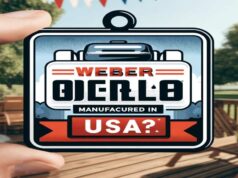
Are Weber grills manufactured in the USA? Unveiling the Truth Behind American Craftsmanship

Is Usa Bigger Than Canada: Unveiling The True Giants Of North America
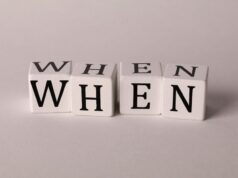
When Did Muhammad Ali Stop Talking: Unraveling The Moment Muhammad Ali’s Voice Fell Silent
Leave a reply cancel reply.
Save my name, email, and website in this browser for the next time I comment.

Recent Posts
Can my child ride in uber without car seat in the usa, what is the usa national dish exploring regional flavors, is rtic made in usa unveiling the origin of rtic products, the most common sports injuries and how to treat them.

EVEN MORE NEWS

Can My Child Ride In Uber Without Car Seat In The...

POPULAR CATEGORY
- Lifestyle 539
- Business 524
- Finance 154
- Questions 71

What Are The Pros And Cons Of Raw Feeding For Puppies?...

Does Russell Wilson Have A Ring? The Former Seahawks Quarterback

San Diego Wave Vs Chicago Red Stars: Head To Head Comparison
What Is ‘Library Binding’?
By jake rossen | dec 4, 2023.
It’s something every book lover dreads: Picking up a favorite title and having pages separate from the spine, looking on as wonderful prose becomes unmoored from its binding. This can happen with a book that’s barely been touched, yet some library titles appear to last decades—and pass through countless hands—without coming apart.
Why? The secret is in a process known as library binding.
To put library binding in context, it helps to understand how book publishers assemble books for commercial sale to consumers. Pages are put together in blocks, also known as signatures, which are comprised of folded pages. The blocks are glued together, and then the vertical end with the fold is cut off so that each individual page is glued to the spine. This process is known as trade binding or perfect binding.
In library binding, however, books are sewn together, which creates a more durable bond than adhesive. While some consumer titles are also sewn, it’s just one step of the overall library binding process. In order to be considered library-bound, books need to be assembled according to a set of strict requirements approved by several bodies: the American National Standards Institute, the National Information Standards Organization, and the Library Binding Committee. Collectively, the protocol is known as the ANSI/NISO/LBC Z39.78-2000 (R2018) Standard for Library Binding, which is often mercifully shortened to the Standard.
The requirements to meet the Standard are exhaustive [ PDF ]. Suffice it to say, the sewing must be done to specification. Often, a cloth material known as buckram is used for covers because it’s highly durable against water, mildew, and scratches.
While some books can be ordered to the Standard, others can be submitted to a certified library binder for what amounts to spinal surgery, with the book reinforced to stand up to the rigors of library borrowing.
The Standard first took root in the 1920s [ PDF ], when school officials and school librarians noticed that books weren’t rugged enough to tolerate use in educational settings. A standard was created by librarians and book manufacturers. By 1935, library binding had branched off from the publishing world, likely in an effort not to have the Standard undermined by publishers looking to spare expense.
Cost is a big reason why not all books adhere to the Standard: Library binding is more expensive, and publishers want to keep production expenses to a minimum. Libraries may pay more up front, but they’re likely to save money in the long run because books in their inventory won’t need to be replaced often.
There’s no broadly accessible data on what percentage of library books are bound, or how accessible books that conform to the Standard are. Scholastic offers library-bound copies of a number of titles via its teachers’ sales portal. Some vendors may offer binding with more durable materials without conforming to the Standard.
Would consumers buy library editions if they were more widely available? Probably not. Paperbacks tend to outsell heartier hardcovers, accounting for roughly 80 percent of all book sales. It’s unlikely consumers would opt for more expensive editions when privately-owned books aren’t handled nearly as often as a textbook or library title.
The consequence, of course, is that one day a favorite book may fall apart in your hands—but maybe your local library will have a copy.
Have you got a Big Question you'd like us to answer? If so, let us know by emailing [email protected] .
Open Tues-Sat 10am-4pm: Closed 5/25-5/27 for Memorial Day
Library Binding for Preservation
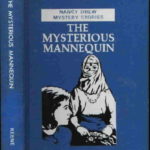
What is Library Binding?
Library binding is a preservation technique for library books, which often face the tough reality of rough handling, many borrowers over their circulating lifetime, and the need to stick around for a long while. Library binding is a protective hardbound binding that is meant to protect the book, or bound set of serials, for durability and long-term preservation. The longer the shelf-life of library books, the more the library can save on the cost of re-buying books over time. Additionally, books are kept in better condition, providing a nicer experience for the reader.
In most cases, the covers on library bindings are made of buckram (a sturdy cotton cloth) and coated with acrylic which renders it resistant to insects, water, and ultraviolet light (2). The spine may be reinforced with linen or muslin, and rounded to prevent the case from buckling. The result is a remarkably sturdy book

History of the Practice & Standards
Standards for library bindings have been around for nearly a century, with practices developing & improving over time. Previously part of the Book Manufacturers Institute (BMI), the Library Binding Institute (LBI) broke off in 1935 to found its own trade association and promote the durability of library bound books as opposed to publishers’ bindings, which are often produced at the lowest cost to the publisher, sacrificing quality of the binding. Some 80 years later, the two organizations merged again in 2014, with the Library Binding Institute, now the Library Binding Council, falling under the aegis of the Book Manufacturer’s Institute (3), with a shared mission for supporting excellence in printing and binding.
Over the years, librarians and binders came to realize that some of the practices for ensuring a book’s long life & durability were a little too strong, and could compromise the openability of a book for ease of reading and photocopying.
In her Guidelines for Library Binding conservation leaflet, Sherelyn Ogden notes that:
“In 1984 Jan Merrill-Oldham identified the following desirable characteristics of a library binding: 1) The binding should be as conservative as possible, altering the text block minimally; 2) the binding should be as non-damaging to the text block as possible and should not shorten its useful life; 3) the bound volume should open easily to a 180° position to facilitate non-damaging photocopying; and 4) the bound volume should stay open when resting face up on a flat surface so the reader has both hands free and can take notes easily.”
Guidelines were improved and the current Standard, ANSI /NISO/ LBI, Z39.78-2000 , ensures that the binding itself is not damaging to the book; that the text block is kept intact in case any text or images run to the edges of the page; and that the book can lie open at a flat 180 degrees.
While the Standard is written primarily for book binders with heavy use of industry terminology, a concern arose over the need for librarians and library staff to easily understand their options in binding. With that, the Guide to the ANSI/NISO/LBI Library Binding Standard Z39.78-2000 was written by Jan Merrill-Oldham and Paul Parisi.
The Northeast Document Conservation Center outlines (4) some of the basic questions to consider when contracting with a library binder. These include: whether the book should be resewn as well or just recased, whether the binder can trim the pages or not, and whether repairs to the paper are desired. And of course the Guide to the Standard provides much more in-depth detail on binding options, materials, decision-making, and post-binding inspection.
Further Reading & Resources
The Library Binding Council (LBC), part of the Book Manufacturers’ Institute
The LBC is the predominant certifying organization for library binders. Library binders apply for certification by having their work tested against accepted professional standards for library binding and libraries can request to see their certificate when entering contractual business partnerships with the bindery.
ANSI /NISO/ LBI Library Binding Standard, Z39.78-2000
Published jointly by the National Information Standards Organization and the Library Binding Institute, this is the official standard used by library binders used to ensure the highest quality and most durable binding practices.
Guide to the ANSI/NISO/LBI Library Binding Standard Z39.78-2000 by Jan Merrill-Oldham and Paul Parasi
This guide, intended for use by library staff, translates the technical terminology used in the Standard into a basic language understood by non-binders. It was created with the goal of guiding library staff through the process of deciding specifically how they would like their collections bound.
Photo Examples of Library Binding from the International Online Booksellers Association
(1) http://bindery.berkeley.edu/campus-libraries/library-binding-vs-publishers-binding
(2) https://en.wikipedia.org/wiki/Library_binding
(3) http://whattheythink.com/news/66810-bmi-hardcover-binders-international-merge/
(4) https://www.nedcc.org/preservation101/session-4/4library-binding
Blogger Sherry Lochhaas is a librarian by trade and enjoys exploring the odd & fantastical side of life. She lives in Oakland, California.
- ← Prev Post
- Next Post →
Your ticket for: Library Binding for Preservation
Library Binding vs. Publisher's Binding
Mass production yields quality concerns.
Books published for a mass audience are produced in high volume with high pressure to deliver at the lowest possible cost. Intense competition among commercial book suppliers results in low bids, which in turn restrict budgets and limit choices. The outcome is frequently a substantial compromise in product quality with common incidences of split bindings, warped book covers and de-lamination.
Library Binding Subject to Rigorous Standards
Library binding specifications were first established in 1923, and continued to evolve and formalize through the efforts of a dedicated standards body, the Library Binding Institute (LBI). The LBI is committed to overseeing and monitoring adherence to the rigorous standards outlined in the latest ANSI /NISO/ LBI Library Binding Standard, introduced in 2000.
The University of California Library Bindery is a Certified Institutional Library Binder. Certified Library Binders must undergo an independent inspection by the Library Binding Institute to certify that they have the equipment, experience, knowledge and expertise to manufacture book- bindings that meet the specification of the American National Standard for Library Binding.
Long Shelf Life for Library Bound Books
Books bound according to the material and process specifications established in the American National Standard for Library Binding have far longer shelf lives than publishers’ or edition bindings. Library bound books incorporate high-quality materials and rigorous manufacturing processes to create books designed to withstand the high levels of use typically found in circulating library collections.
These high-quality books remain in good condition even after heavy use, providing the library patron with an attractive and usable print copy. The significantly longer shelf life enjoyed by library volumes generates substantial cost savings for the library through reduced expenditures for the replacement of damaged material, or for the rebinding of worn or failed edition bindings.
Recommended reading for additional information on this subject can be found by following the links below:
Library Binding Difference
Perfect Bind For Library Use
Why Books Fall Apart
The above articles were authored by Professor Werner Rebsamen.
Please visit the Library Binding Institute website at : http://www.lbibinders.org/
Empty Mirror
a literary magazine
Book Bindings: An Illustrated Guide for Collectors
Denise enck.

If you collect books, you’ve probably encountered several types of bindings. Here’s a description of the various types and some things that affect their condition.
Primary Types of Book Bindings
Broadly, there are two kinds of bindings: hardcover, and softcover. The books you’re most likely to find in your local bookstore tend to fall into three variations of these.

Hard cover books are also sometimes referred to as hardback, or hardbound.
Usually a hardcover book is found in a dustjacket, which wraps around the book, providing protection as well as a place to provide a description of the book, brief author bio, bar code, price, etc.
Mass market paperback

The Grisham, Grafton, or Cornwell novel you bought at the supermarket checkstand to read on your vacation is one of these.
In the past these were sometimes referred to “pocket books” (which is actually the name of a publisher).
Trade paperback

They’re often about 6×8 inches or so, though size varies. Literary fiction and nonfiction are most often published in this format.
The last poetry or nonfiction paperback book you purchased is almost certainly a trade paperback.
When perusing booksellers’ catalogues (or online book listings), you might notice the term “ wrappers ” or “wraps,” which refers, broadly, to any paper binding. (The terms soft cover , paperback , and wraps also refer to a paper binding.)
Other types of book bindings

Many small-press poetry books are in chapbook form; they’re a time-honored publication method for established & beginning poets alike.
Library binding
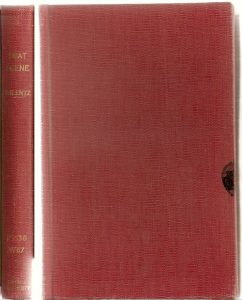
The author, title & call number is often printed or embossed onto the spine & sometimes the cover. And, as is the case with other library books, the customary markings, stamps & pockets are added as well.
Buckram is a heavily woven fabric of cotton or linen, often used to bind library books (& some other books). To stiffen & protect it, a special glue or other substance is applied to the fabric.
Collectors usually avoid library-bindings, since the book has altered from its original state.
Dustjacket:
The paper that wraps around the covers of a hardcover book; occasionally you’ll find a softcover book with a dustjacket as well. It’s often abbreviated in booksellers’ catalogues and online listings as a “dj.”
Sometimes referred to as a “dustwrapper”, it is not to be confused with “wrappers” which means the covers of a softcover book.
Dustjackets first appeared late in the 19th century but were not commonly used until early in the 20th century. They were often discarded by the purchaser making early dustjackets difficult to find now.
For book collectors, the presence of a dustjacket – and its condition – is very important & has a substantial bearing on the value of a book.
Common Binding Problems
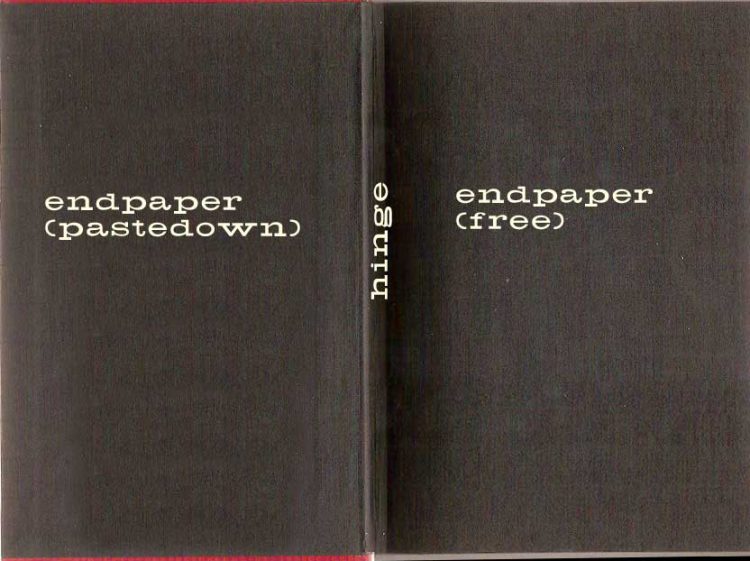
The hinges are a book’s weakest point so prone to problems, especially if the book is handled or shelved carelessly. Loose or broken hinges are very common on old books.
“Hinges starting” could mean one of two things:
- The book’s hinges are beginning to separate from each other via a tear. (the flyleaf separating from the pastedown). If not just “starting” the hinges are described as “broken.”
- The book’s hinges are beginning to loosen. The endpapers have come partially unglued from the covers at the hinge. Sometimes this is described as “shaken hinges.” Loose hinges can lead to broken hinges.
If the book is of some worth the value will probably be enhanced by repair, provided it’s well done. (Poorly done repairs can reduce the value.) It may or may not be worth making such a repair on a common book. Any repairs must be disclosed in the event you decide to sell the book.
Hinges can be repaired fairly easily at home (usually with archival glue or tape), but if the book is valuable it’s best to have a professional do it. If you’re tempted to do it yourself, Google “book hinge repair” or see: Broken Book Hinge Repair Loose Book Hinge Repair instructions .
To prevent loose hinges, pay careful attention to how you handle and shelve your books. Never pick a book up by one cover, or bend the covers back too far. Always shelve books vertically (not on their sides, or spine-up), so that they are neither packed too tight on the shelf nor leaning. Books should be shelved with other books of similar size; a large book surrounded by small books doesn’t have the proper support & may develop loose hinges.
Denise is Empty Mirror's founder and editor. She's edited several other literary magazines and small-press publications since the 1990s. When not at Empty Mirror, you can probably find her reading or writing -- or out exploring the back roads and beaches of Washington State.
You might also like:

Established in 2000 and edited by Denise Enck, Empty Mirror is an online literary magazine that publishes new work each Friday.
Each week EM features several poems each by one or two poets; reviews; critical essays; visual art; and personal essays.

Recent features
- My Father’s Map
- Seeing Las Meninas in Madrid, 1994
- Visual poems from 23 Bodhisattvas by Chris Stephenson
- Historical Punctum: Reading Natasha Trethewey’s Bellocq’s Ophelia and Native Guard Through the Lens of Roland Barthes’s Camera Lucida
- Panic In The Rear-View Mirror: Exploring The Work of Richard Siken and Ann Gale
- “Art has side effects,” I said.

What Is Library Binding: Purpose, Types, Methods, & Identification
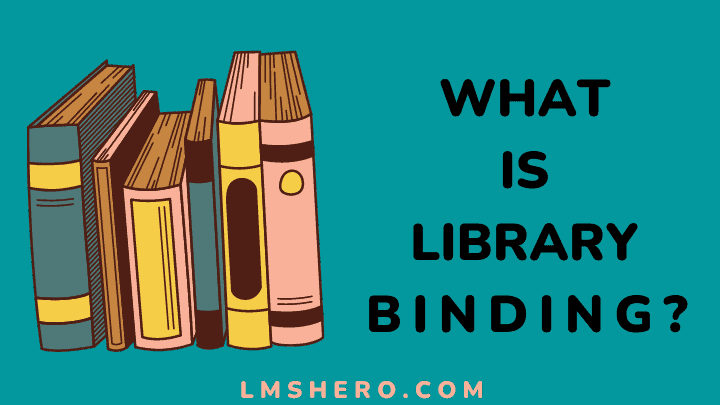
Binding books have a long and illustrious history and are one of the many vital parts of library supplies. Library bindings can be decorative or functional, but they all serve a purpose.
Some bindings ensure that every document is stored safely and in the best condition possible. Others are used to help make the reading experience more enjoyable.
Library bindings can also be unique in other ways, depending on the type of library where they are used.
Library binding is also a particular binding explicitly designed for use within a library setting. It’s a sturdy and durable type of binding that can handle frequent service and sometimes harsh conditions.
If you’re interested in learning more about a library binding, read on.
What is Library Binding?
Binding book is an old tradition that began with monks who wanted to keep their texts safe. They found a way to tie the text into its cover, creating a durable and attractive book.
Library binding means that the book’s spine (the backbone or main support) is covered with hardcover material like cloth, paperboard, and leather, which protects it from damage and enables it to be easily opened for reading.
The pages are attached to the spine using thread and adhesive. The result is a book that can be opened flat from the spine but has no moving parts.
This binding became quite popular during the Middle Ages and is still used for textbooks, trade books, and many other publications.
Over time, binding techniques changed, and today we have many types of bindings: hardcover, paperback, spiral binding, and saddle stitch binding, among others.
Why Does Library Binding Matter?
Binding a book is an essential step in preserving the work it contains. The main purpose of library bindings is that they are designed to protect books and keep them for future generations.
They’re made with materials that don’t leach chemicals or erode over time, so they can last longer than regular binding methods.
Library bindings look better and provide a more secure reading experience because the pages won’t pop out when you fold the spine down.
Binding books means more than just protecting pages and giving them a durable cover. It’s about preserving written stories, poems, and essays for generations.
Library binding puts these stories in the hands of as many people as possible so that everyone can understand and appreciate them. Plus, library binding looks great on any shelf.
What Are the Types of Library Binding?
The two types of library binding are original and aftermarket.
Original binding is done to preserve the text as it was originally written. It comes from books being bound initially for use in libraries where they will receive harder-than-usual usage.
This type of binding ensures that the book remains durable and easy to read over time. Original binding is the best for preserving a book’s original look and feel. Additionally, it often comes with a higher price tag.
This aftermarket library binding is perfect when libraries need to replace or upgrade current bindings but don’t want to spend a fortune on new editions.
It is the ideal way to keep books in excellent condition and easily accessible. It’s a fast, easy, and affordable method of binding that will offer years of service.
What Are The Methods Of Library Binding?
There are three practical methods of library binding. They are:
1. Over-sewing
This binding method involves sewing together loose book pages to form the book’s body.
Tiny vertical holes are pierced through each page’s far left side, and the pages are sewn together to form the body of the book. It is a strong binding for books that are five inches thicker.
The margins of over-sewn books also tend to be smaller in comparison since they don’t lie flat when opened up.
2. Sewing through the fold
This method involves attaching different signatures and connecting them sequentially to form the body of the book.
Essentially, a signature is a set of folded papers that form the book’s body. They are usually sewn through the fold with a needle and thread, but they can also be machine-sewn with several arrows and threads.
This type of library binding has wide margins, making it easier to read unfolded pages while keeping books sturdy and closed when not in use.
3. Side sewing
Side sewing is a method of library binding where loose pages are attached by sewing the book’s entire body through the side, along the margin.
The book won’t lay flat after sewing, but it’s tightly sealed, so it won’t fall open. The process is done in one pass and then sewn by machine.
Library Binding vs Hardcover
Library binding describes the method of producing a book specially prepared for use in a library setting.
Binders use various materials to make their bindings, including leather and cloth. They also can apply some decoration on their books, such as gold leafing or marbling.
These bindings are generally durable. Individuals may find it difficult to own books with library binding since they are ideally suited for libraries.
Hardcover books are produced by taking two sheets of paper and folding them together to make a book cover.
The inside pages are then attached with glue or staples, called “sewing-together books.” The term “hardcover” refers to the fact that these books have thicker pages.
How Do You Identify a Book with a Library Binding?

To identify a book with library binding, look for the following details. The spine should be tightly bound with rectangular corners tapered towards the edges.
This type of binding often has a rough cover, mostly seen on older, rare titles.
Additionally, look at how closely the pages mesh together. Libraries prefer to thumb through these volumes rather than flip through them like a regular book.
Lastly, library bindings do not come with a dust jacket.
What is the best method to preserve library binding?
There is no best method, but one common practice is to keep the bindings in good condition and avoid exposure to moisture or contaminants.
Other measures may include climate control, no trim, less strain on the binding, and professional care.
Why are library-binding books more expensive?
Many factors contribute to the price of a library-binding book, including the material cost (paper, ink, glue) and the degree of craftsmanship.
Do library bindings have a removable dust jacket?
No, library bindings don’t have a removable dust jacket. A dust jacket is a cover put on a book before it’s sold. It protects the pages and makes the book look nicer.
What materials are used for library binding?
The most common material used for library binding is buckram. Buckram is a durable material made from 100% cotton. In most cases, it is often covered with acrylic.
Final Thoughts
Library bindings are an important part of the library experience. While there are many excellent modern bindings, traditional library bindings can still give a book a sense of elegance and prestige.
Library bindings provide a unique service to libraries—they are beautiful tools that can help patrons connect with the books they borrow.
In addition, library binding offers librarians an opportunity to create high-quality publications that can be used as teaching materials or reference sources.
Library binding is a craft passed down through the generations, and its practitioners are custodians of a centuries-old tradition.
By properly preparing and mounting books, librarians ensure that these treasured objects last for future generations to enjoy.
One set of people most suitable for working as librarians are people with an English degree. If you have an English degree, explore your most profitable career prospects .
Thanks for reading.
You may also like:
- What Is A Loose-Leaf Book: Pros, Cons, Maintenance Tips & More
- See How Long It Takes To Read 300 Pages?
- Best Landing Page Builders For Online Courses
- What Are Motor Skills: A Comprehensive Guide
- Recognize 5 Psychological Effects Of Working Retail [Plus Tips To Cope]
People Also Read:

Why Do Waiters Get Paid So Little [+ How To Make More Money]

Navigating Workplace Norms: Can You Email A Resignation Letter?

Difference Between Roles And Responsibilities

Does Suspension Mean Termination?

Moral Claim: Definition, Significance, Contemporary Issues, & Challenges

Why Can’t You Flush The Toilet After A Drug Test?


Preservation: Special Topics
- General Resources
- Special Topics
- Digitization
- Digital Preservation
- Bibliography
Topics on this Page
Collection assessment, film & audivisual media.
- Leather Bookbinding
Librarians need to be concerned with two main types of binding process:
- "Edition" or publishers' bindings, or those that are applied as part of the book production process.
- "Library binding," or the hardcover binding of serials and paperback books prior to library use.
- Book Binding Technology An overview of bindings that may be found in libraries, written by Werner Rebsamen, Professor Emeritus at Rochester Institute of Technology.
- Guidelines for Library Binding - NEDCC Because books differ in value and in the way they are used, it is important to select an appropriate type of rebinding when they become damaged. Library binding, one type of rebinding, is probably chosen for more books than any other type. Library binding is a good choice where economy and durability are the objectives. It is appropriate for books that are significant primarily for the information they contain and that do not have value as objects.
- Library Binding - ANSI/NISO Z39.78 (2010) Binding is the first line of defense in library preservation and can be a major part of a library's preservation budget. Developed jointly by NISO and the Library Binding Institute, this ANSI/NISO/LBI standard describes the technical specifications and materials to use for first-time hardcover binding of serials and paperbound books intended for the rigors of library use. It also covers rebinding of hardcover books and serials. Following this standard will give you volumes that are sturdy, durable and flexible.
- Quality is No Accident: A Review of Binding Standards from 1923 to 2003 A slideshow presentation by Paul Parisi.
- Resources for Selecting and Working with a Library Binder - ALCTS Prepared by Shannon Zachary, Head of Conservation Services University Library, University of Michigan at Ann Arbor; From “To Bind or Not to Bind," 2001 ALA Annual Conference, June 16, 2001, San Francisco
Wilkinson, Frances C., and Sever Bordeianu. "In Search of the Perfect Cover: Using the RFP Process to Select a Commercial Binder." Serials Review 23, no. 3 (1997): 37-47. doi:10.1080/00987913.1997.10764391.
- Special Collections Materials Survey Instrument In 2003, Columbia University Libraries (CUL) received funds from the Andrew W. Mellon Foundation to carry out a one-year survey of unprocessed and under-processed archival collections. Using the model developed by the Historical Society of Pennsylvania (HSP), which includes extensive explanations of the access, condition, and value ratings, an effective workflow was planned in accordance with the design of the survey instrument, a Microsoft Access database.
- Survey Instrument for Audion & Moving Image Collections In 2005, the Andrew W. Mellon Foundation generously provided support to the Columbia University Libraries to develop and test a survey instrument to inventory and assess the physical condition and intellectual control of audio and moving image materials. The survey instrument and instruction manual are available for free download.
- Visual & Playback Inspection Rating System: ViPIRS NYU ViPIRS is the Microsoft Access database tool designed to assist in the survey and preservation planning of audiovisual collections as part of Developing Principles and Methodologies for Moving Image and Audio Preservation in Research Libraries. ViPIRS is designed with a wide range of users in mind: from audiovisual novices to experts; from small institutions to large. ViPIRS has been developed for magnetic media, which includes modules for videotape, audiocassettes, and 1/4" reel-to-reel.
- The Association of Moving Image Archivists (AMIA) AMIA was established to advance the field of moving image archiving by fostering cooperation among individuals and organizations concerned with the acquisition, description, preservation, exhibition and use of moving image materials.
- AV Media Preservation Videos - CCAHA Online tutorial developed for curators, librarians, archivists, collections managers and other staff who are involved in managing machine-based media collections in cultural institutions. Viewers will learn basic principles and concepts for managing audiovisual collections and will be provided with information and strategies for preservation, contracting for reformatting, and finding funding opportunities.
- The Sound of Silence in the National Library The Library of Congress Packard Campus for Audio-Visual Conservation in Culpeper, VA houses sound recordings, films, and video reside in temperature-controlled vaults. The audiovisual conservation part of the Library of Congress has under its purview all recorded audio, film, video, and associated printed material (like movie scripts) donated to and collected by the library.
- Digitizing Video for Long-term Preservation: An RFP Guide and Template Working in collaboration with its academic partners and technical advisors, New York University's Division of Libraries is pleased to announce the release of a publication. Digitizing Video for Long-term Preservation: An RFP Guide and Template is intended to take an institution step-by-step through the process of drafting a Request for Proposals (RFP) for the transfer of analog video -- specifically VHS -- to digital carriers for preservation. This template can be used by libraries, archives, and other cultural heritage institutions and submitted to qualified transfer vendors.
- Preservation of Film & Audio - WorldCat list List of books and articles about how to and the issues surrounding the preservation of film and audio items.
- Managing Microforms in the Digital Age (2013) Addresses trends in bibliographic control, storage environments, current vendors and resources and microform terminology.
- Guidelines for Microfilming Public Records - Missouri State Archives These Guidelines for Microfilming Public Records outline the standards that will ensure your information will be secure and available in the future. They also offer recommendations about specifications that will facilitate the migration of microfilm to a digital format. These guidelines must be followed to ensure that archivally sound microfilm is created.
Leather Bookbindings
- Guidelines for the Conservation of Leather and Parchment Bookbindings Explanation of why this publication should only be used with extreme caution.
- Leather Rebacking Handout from the Guild of Book Workers Standards Seminar in 2013.
- << Previous: General Resources
- Next: Digitization >>
- Last Updated: Jun 29, 2022 3:04 PM
- URL: https://libguides.ala.org/libpreservation
Library Binding
- Binding Standards Brief bibliography of books on this topic.
- Library Binding IG Forum for discussing matters of concern to librarians and the commercial binding industry.
- Resources for Selecting and Working with a Library Binder (ALCTS) Web sites, books and organizations for librarians who interact with library binding vendors. --by ALCTS Preservation and Reformatting Section (2001)
Share This Page

- Book Promotion Graphics
- Free Book Mockup Generator
- Free Tools & Templates
- Free Book Title Generator
- Free Fiction Name Generators
- Try It Free
by CJ McDaniel
Library Binding
December 12, 2023 in
To enhance the longevity of books, library binding —also known as case binding—is employed. This method utilizes stronger materials and stitching than traditional bookbinding techniques, ensuring increased resistance to wear and tear. Library binding is commonly applied to heavily used books like reference books, textbooks, and others that will endure substantial use over time.
The process initiates with material selection. The book cover and spine are typically crafted from heavier- weight paper or cloth that can be adorned with designs or titles. Next, the book’s pages are sewn together using a more robust thread than traditional methods.
Subsequently, the binding is affixed to the cover and spine through adhesive application, while a protective coating shields against yellowing due to age and damage from moisture exposure and light penetration. While library binding may incur added expenses for a book’s purchase price, its extended lifespan justifies this investment—especially for frequently used volumes.
Library Binding is an excellent revitalization technique for hardcover books that extends their durability substantially. Typically reserved for extensively utilized or highly valued literary works in libraries and personal collections, Library Binding has long been recognized as significantly prolonging any given volume ’s shelf-life by up to threefold! Not only that, but it also drastically improves their overall aesthetic appeal—making them appear brand new!

Related Entries
- 4-color-process
- Adobe Digital Editions
- Advance Reading Copy
- All Edges Gilt (aeg)

Most Popular
Why Turtleback Library Binding is the Best Option for Schools
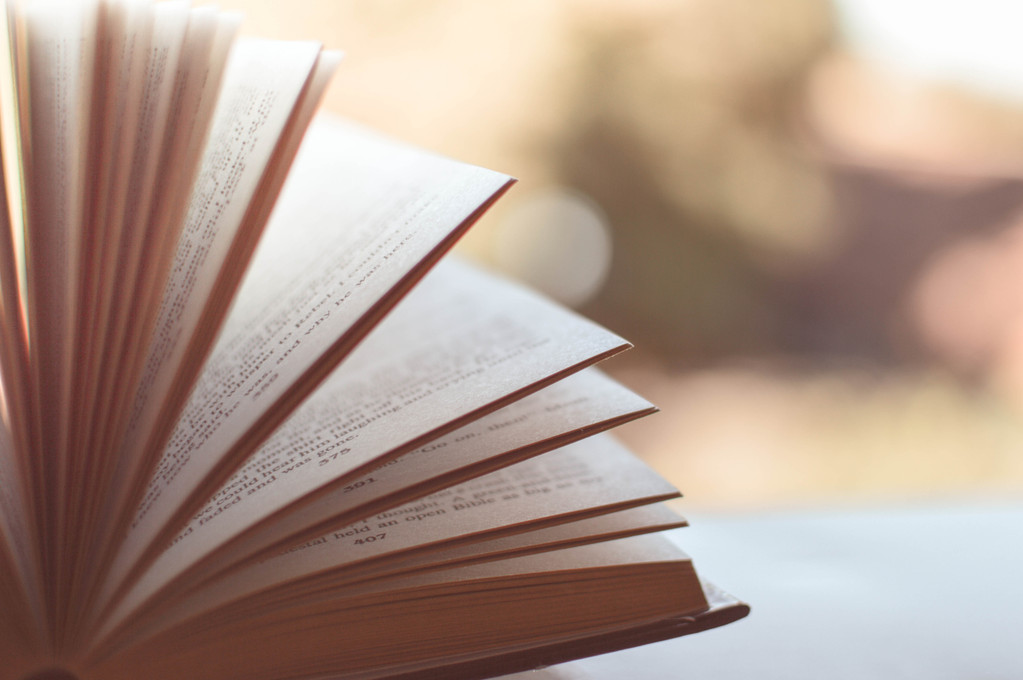
Posted by Megan Habel on Dec 29, 2017

Preserving the quality of paperback books is always a challenge, especially when it comes to the classroom. This is why schools and libraries across the world use library binding on their books. BookPal proudly carries Turtleback book binding for over 9,000 different titles — and counting! Turtleback binding transforms paperback books into long-lasting, quality hardcovers. Learn what Turtleback binding is and why this is the best option for schools below.
Why choose Turtleback library binding?
1. The book's life will be significantly extended. By using the finest materials and processes in the industry, turtleback-bound books will last exponentially longer than their paperback — and even hardcover — counterparts.
2. Turtleback binding is specifically designed to withstand the demanding environment of schools and libraries. With a focus on reinforcing the spine, endpapers, binding, and covers, these books will survive the harshest of treatments.
3. Turtleback binding has a lifetime guarantee. The quality of work in Turtleback products is guaranteed to last the lifetime of the book. If the binding does not meet your expectations of quality, it may be replaced free of charge.
4. All books feature original cover artwork. The original art is scanned and enhanced to fit the new binding. Printed on durable paper and laminated with polyester film, these books are abrasion-resistant and easily cleaned.
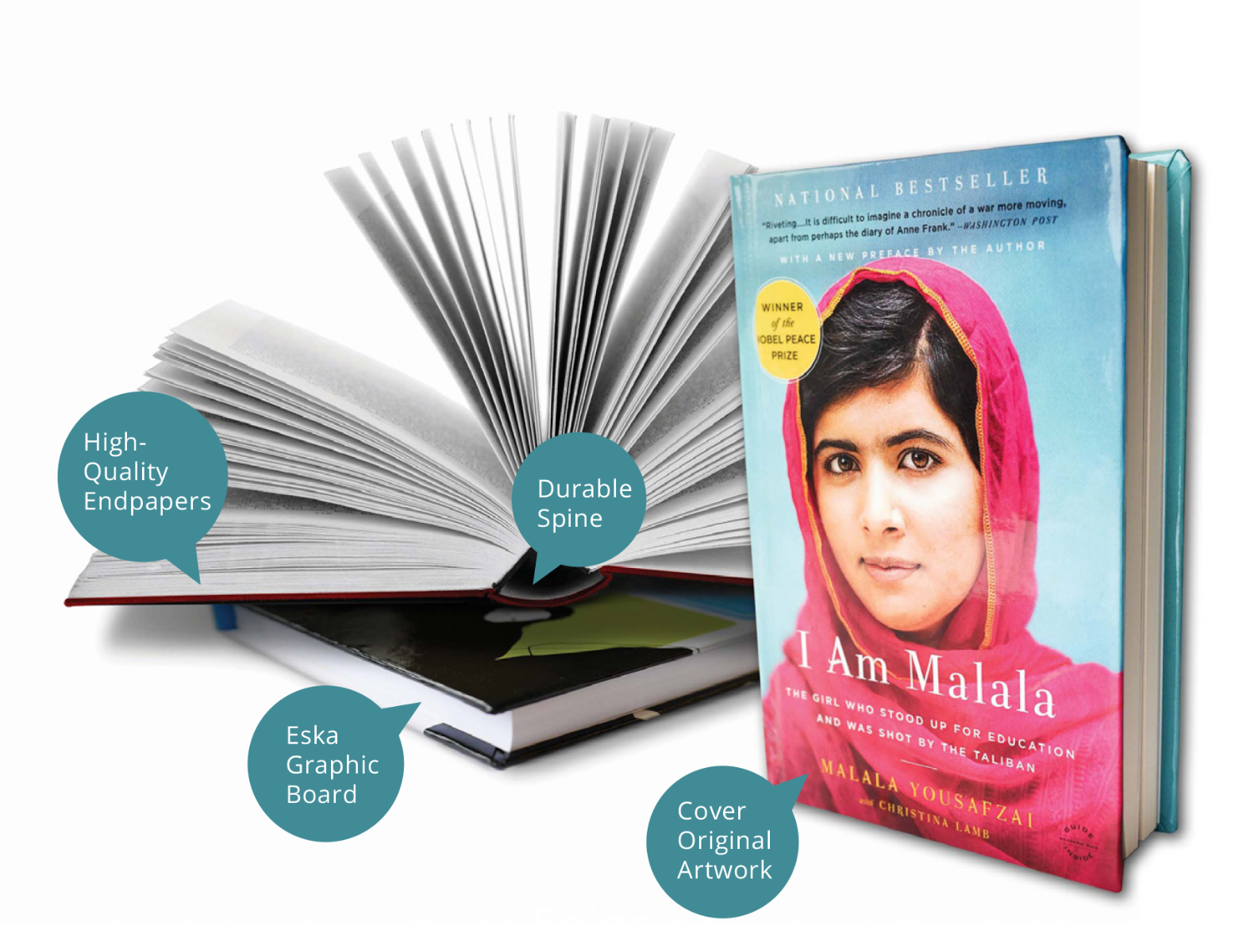
BookPal can help you transform almost any paperback title into a durable library-bound hardcover. Looking for a specific book in Turtleback library binding? Let us know and we'll work with you to make it happen.
By purchasing library-bound books in bulk for your school or library, you will be investing in a quality product whose long shelf life will result in long-term savings.

This post was written by Megan Habel, the marketing associate at BookPal. She is currently reading Outlander by Diana Gabaldon.
- durable books
- library binding
- Turtleback binding
Shop Summer Learning

You are about to leave our Parents site. Are you sure you want to leave?
By clicking continue, your current session will end.
- Book Wizard
- Purchase Order
- Shop Summer
- Back-to-School Guide
- New Programs
- Collections
- ClassroomsCount™ Campaigns
- eGift Cards
- ESSER Funding
- Education Solutions
- Teaching Tools
- Summer Learning Programs
- Customer Service
- Order Lookup
- Back to School Solutions
Select Your Partner Organization
If you are already registered on our website, you can sign in by selecting your partner organization below, then entering your email address and password on the next screen.
- SELECT ORGANIZATION
- FACE MEMBERSHIP
- LITERACY PARTNERSHIPS
- NEW YORK STATE
Library Binding Books
This item is temporarily out of stock. Our order for this product is expected on .
Please enter a valid e-mail
Thank you! We will contact you when the item is available.
To be notified when this item is available, please click the "Notify Me" button below.
Item is on backorder and will ship when available.
Your order will ship on or around the release date.
Key Features
Description.
Online Resources
Teacher tips, user benefits.
Discover More
Read The Article
About the author, product details.
- File Format:
- Weston Woods ID:
- Manufacturer:
- Lexile® Measure:
- Reading Level:
- Spanish Lexile Measure:
- Spanish Reading Level:
- Funding Type:
Also included in Collections
Need inspiration? Checkout our Shop by Zone section to find ideas for your space.
Find hundreds of items on sale! Shop Today's Deals
Track by my order number

Catalog Code Info
Enter your catalog code here. The catalog Code can be found on the back of your catalog. Once entered, the sale prices in your catalog will also display on this website.
Books & Media

Our Company
Customer care, online resources, sign up for exclusive promos & sales.
Need Help? 800.548.7204 [email protected]
P.O. Box 0964, Tremont, IL 61568-0964

Turtleback Books
Our Durable Library Binding Extends the Life of Your Classroom Titles

- Reinforced Books + Lifetime Guarantee Reinforced library bindings for maximum durability and a lifetime guarantee.
- Personal Support Our educational sales consultants provide one-on-one support that caters to your unique purchasing needs.
- Easy Ordering of Over 8,000 Titles Contact your educational sales consultant for availability.
Original Cover Artwork • High-Quality Endpapers • Durable Spines
Why Turtleback Books?
Schools can save hundreds.
by investing in Turtleback binding instead of paperback!

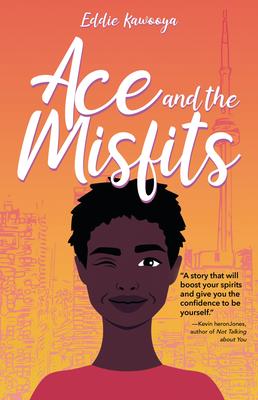
Ace and the Misfits
In his debut novel, Eddie Kawooya presents a fish-out-of-water story of immigration and the pains and joys of integration into a new and sometimes frightening environment.
Loosely based on Kawooya's own life, this novel follows fifteen-year-old Patrick "Ace" Katumba. Kutumba's life is changed drastically when he, his mother, and his sister are forced to flee their lives in Uganda. Ace's mother is a journalist who has reported on government corruption and has now been marked.
Arriving in Canada, Ace finds himself living in his uncle's basement apartment and having to integrate into a new community where he is the "African." Despite being an excellent student, he meets ignorance and bullying at school until he falls in with a crew of international misfits who understand what he's going through. With their support, Ace starts to regain the confidence he lost in the move and his subsequent troubles.
At the core of this story is the isolation a child feels after his world is snatched from him, and the journey of self-worth and self-confidence he must undertake to rise above it.
Create a free Bookclubs account to organize your book club, get reading recommendations, view hundreds of discussion guides, and more!

Reading this title?
Hotel On The Corner Of Bitter And Sweet (Turtleback School & Library Binding Edition)
By Jamie Ford
Hotel On The Corner Of Bitter And Sweet (Turtleback School & Library Binding Edition) Book Club Questions PDF
Click here for a printable PDF of the Hotel On The Corner Of Bitter And Sweet (Turtleback School & Library Binding Edition) discussion questions
- Скидки дня
- Справка и помощь
- Адрес доставки Идет загрузка... Ошибка: повторите попытку ОК
- Продажи
- Список отслеживания Развернуть список отслеживаемых товаров Идет загрузка... Войдите в систему , чтобы просмотреть свои сведения о пользователе
- Краткий обзор
- Недавно просмотренные
- Ставки/предложения
- Список отслеживания
- История покупок
- Купить опять
- Объявления о товарах
- Сохраненные запросы поиска
- Сохраненные продавцы
- Сообщения
- Уведомление
- Развернуть корзину Идет загрузка... Произошла ошибка. Чтобы узнать подробнее, посмотрите корзину.
Oops! Looks like we're having trouble connecting to our server.
Refresh your browser window to try again.
Amazon Prime includes:
Fast, FREE Delivery is available to Prime members. To join, select "Try Amazon Prime and start saving today with Fast, FREE Delivery" below the Add to Cart button.
- Cardmembers earn 5% Back at Amazon.com with a Prime Credit Card.
- Unlimited Free Two-Day Delivery
- Streaming of thousands of movies and TV shows with limited ads on Prime Video.
- A Kindle book to borrow for free each month - with no due dates
- Listen to over 2 million songs and hundreds of playlists
- Unlimited photo storage with anywhere access
Important: Your credit card will NOT be charged when you start your free trial or if you cancel during the trial period. If you're happy with Amazon Prime, do nothing. At the end of the free trial, your membership will automatically upgrade to a monthly membership.

Return this item for free
Free returns are available for the shipping address you chose. You can return the item for any reason in new and unused condition: no shipping charges
- Go to your orders and start the return
- Select the return method

Download the free Kindle app and start reading Kindle books instantly on your smartphone, tablet, or computer - no Kindle device required .
Read instantly on your browser with Kindle for Web.
Using your mobile phone camera - scan the code below and download the Kindle app.

Image Unavailable

- To view this video download Flash Player
Follow the author

26 Fairmount Avenue (Newbery Honor Book, 2000) Paperback – March 6, 2002
Purchase options and add-ons.
- Book 1 of 8 26 Fairmount Avenue
- Print length 80 pages
- Language English
- Grade level 2 - 5
- Lexile measure 640L
- Dimensions 5.13 x 0.21 x 7.75 inches
- Publisher G.P. Putnam's Sons Books for Young Readers
- Publication date March 6, 2002
- ISBN-10 0698118642
- ISBN-13 978-0698118645
- See all details

Frequently bought together

Similar items that may ship from close to you

Editorial Reviews
About the author, excerpt. © reprinted by permission. all rights reserved., product details.
- Publisher : G.P. Putnam's Sons Books for Young Readers; Reprint edition (March 6, 2002)
- Language : English
- Paperback : 80 pages
- ISBN-10 : 0698118642
- ISBN-13 : 978-0698118645
- Reading age : 5 - 8 years, from customers
- Lexile measure : 640L
- Grade level : 2 - 5
- Item Weight : 3.6 ounces
- Dimensions : 5.13 x 0.21 x 7.75 inches
- #28 in Children's Literary Biographies (Books)
- #298 in Children's Multigenerational Family Life
- #905 in Children's Chapter Books (Books)
About the author
Tomie depaola.
"Tomie dePaola was born in Meriden, Connecticut, in 1934 to a family of Irish and Italian background. By the time he could hold a pencil, he knew what his life's work would be. His determination to create books for children led to a BFA from Pratt Institute in Brooklyn, New York, and an MFA from the California College of Arts & Crafts in Oakland, California.
It drove him through the years of teaching, designing greeting cards and stage sets, and painting church murals until 1965, when he illustrated his first children's book, Sound, by Lisa Miller for Coward-McCann. Eventually, freed of other obligations, he plunged full time into both writing and illustrating children's books.
He names Fra Angelico and Giotto, Georges Rouault, and Ben Shahn as major influences on his work, but he soon found his own unique style. His particular way with color, line, detail, and design have earned him many of the most prestigious awards in his field, among them a Caldecott Honor Award for Strega Nona, the Smithsonian Medal from the Smithsonian Institution, the Kerlan Award from the University of Minnesota for his ""singular attainment in children's literature,"" the Catholic Library Association's Regina Medal for his ""continued distinguished contribution,"" and the University of Southern Mississippi Medallion. He was also the 1990 United States nominee for the Hans Christian Andersen Medal for illustration.
Tomie dePaola has published almost 200 children's books in fifteen different countries. He remains one of the most popular creators of books for children, receiving more than 100,000 fan letters each year.
Tomie lives in an interesting house in New Hampshire with his four dogs. His studio is in a large renovated 200-year-old barn.
- He has been published for over 30 years.
- Over 5 million copies of his books have sold worldwide.
- His books have been published in over 15 different countries.
- He receives nearly 100,000 fan letters each year.
Tomie dePaola has received virtually every significant recognition for his books in the children's book world, including:
- Caldecott Honor Award from American Library Association
- Newbery Honor Award from American Library Association
- Smithson Medal from Smithsonian Institution
- USA nominee in illustration for Hans Christian Andersen Medal
- Regina Medal from Catholic Library Association
Customer reviews
Customer Reviews, including Product Star Ratings help customers to learn more about the product and decide whether it is the right product for them.
To calculate the overall star rating and percentage breakdown by star, we don’t use a simple average. Instead, our system considers things like how recent a review is and if the reviewer bought the item on Amazon. It also analyzed reviews to verify trustworthiness.
Reviews with images

- Sort reviews by Top reviews Most recent Top reviews
Top reviews from the United States
There was a problem filtering reviews right now. please try again later..
Top reviews from other countries
- Amazon Newsletter
- About Amazon
- Accessibility
- Sustainability
- Press Center
- Investor Relations
- Amazon Devices
- Amazon Science
- Sell on Amazon
- Sell apps on Amazon
- Supply to Amazon
- Protect & Build Your Brand
- Become an Affiliate
- Become a Delivery Driver
- Start a Package Delivery Business
- Advertise Your Products
- Self-Publish with Us
- Become an Amazon Hub Partner
- › See More Ways to Make Money
- Amazon Visa
- Amazon Store Card
- Amazon Secured Card
- Amazon Business Card
- Shop with Points
- Credit Card Marketplace
- Reload Your Balance
- Amazon Currency Converter
- Your Account
- Your Orders
- Shipping Rates & Policies
- Amazon Prime
- Returns & Replacements
- Manage Your Content and Devices
- Recalls and Product Safety Alerts
- Conditions of Use
- Privacy Notice
- Consumer Health Data Privacy Disclosure
- Your Ads Privacy Choices

Please contact the site administrator
Bookbinding/Long stitch
This module covers the making of a long-stitched soft-board binding. This style was recommended for small-scale projects by the book conservation lab at the University of Iowa.
If there are professional bookbinders in your area (and most large cities have them), you should be able to get your book bound for somewhere on the order of $20. Professionals have machines and supplies to do a case binding on fairly short order.
Cover [ edit | edit source ]
The cover for a long-stitched binding is made of cardboard -- specifically acid free two ply museum board . In determining the size of the cover, you have to allow for not only the thickness of the paper, but the thickness of the thread used to sew the binding, so now is the time to get the thread. The thread should be heavy, heavy enough that you might be as likely to call it fine cordage as you are to call it heavy thread! Thread diameters of close to a millimeter (when uncompressed and not under tension) are quite reasonable. The thread should compress to about 1/2 millimeter when successive turns are wrapped tightly around a pencil. See the section on thread for other criteria.
If you have 19 sections, as in DEC's 1973 Introduction to Programming, you'll need to add the thickness of 19 threads to the thickness of your book. To find this, wrap 19 turns of thread tightly around a pencil and measure the length of the wrapping, then add this to the thickness of the clamped spine of the stack of sections that will make up your book.
The museum board has the interesting property that it flexes fairly easily in one direction but it is fairly stiff in the other. You want your cover to flex easily from side to side, since that's the way you tend to bend the covers of a book when you hold it open to read. You want the book to be stiff from top to bottom, since bending in that direction should never happen. Taking this into account, cut a rectangle of museum board with the dimensions shown in Figure 4.1:
Do not cut the cover oversize. The cover used with this style of binding is intended to cover the pages of the book in the way a conventional paperback cover does, with the edges of the cardboard exactly even with the edges of the bound pages.
I did all my cutting with a carpenter's square to guide a large X-acto knife. It took two or three scores with the knife to cut all the way through, and I used an old cardboard sheet as backing so I wouldn't cut into the top of the table I was working on. A paper cutting guillotine also works well to cut out the cover, particularly the type of guillotine that clamps the material being cut so that the blade does not pull the cardboard sideways as it cuts.
Having cut out a rectangular piece of cardboard, you need to score the creases where the cover will hinge to wrap around the pages. I measured twice to avoid error, then set my straight-edge along the planned hinge lines and used a blunt tool to score the crease. Traditional bookbinders would use a bone tool for this. I used the rounded and polished end of a metal ruler I found in my toolbox. Be careful not to cut or tear the fibers of the board when you score it; your goal is to compress the fibers in order to guide the crease. Figure 4.2 shows the cover with scored creases.
Before you bend the cover, you need to cut a series of equally spaced square-ended slits in the cover, as shown in Figure 4.2. Typically, these should be about an inch apart, (anywhere from 2 to 3 cm will do) and the slits at the top and bottom should be a bit closer to the top and bottom edges of the book (about 1/2 inch or 1.5 cm is nice). Each slit should be about 1 mm wide, but the precise width is less important than the uniformity.
I cut 8 slits for this purpose, but 7 would be just as good. The ends of the slits should be about 1/2 the thickness of one section of your book from the creases that you just scored in the cover.
There are several ways to cut these slits. For my first effort, I used an X-acto knife, but I've found that cutting cardboard with a hammer and chisel is very fast and accurate. Use a broad-bladed wood chisel that's almost the length of the slit you want, and make sure it's very sharp. Place the chisel so the flat side faces the side of the slot you are keeping, and the beveled face faces the waste material you will discard. Always work against a disposable backing that won't damage the chisel; I use some heavy strathmore board for this. Practice a bit on scraps of your cover material before you attack the real thing.
Another way to make these slots was suggested to me by Neil Tyler. He has done this with an inexpensive utility knife, the kind with a cast metal handle that is in two halves held together by a screw. Normally, you put only one blade in such a knife, but if you put two blades in, side by side, with a spacer between them, you can cut slots that are about as wide as the thickness of the spacer plus the thickness of one blade. There is one warning about this method! Be extremely careful! Wounds made by closely spaced parallel blades are nasty, difficult to bandage and slow to heal when compared with the commonplace cuts that most users of sharp tools have experienced on occasion.
Punching holes [ edit | edit source ]
Edit this section. Paper is hard stuff, and pushing a sewing needle through 8 layers is no fun; it is far easier to pre-punch each section for sewing! To do this, make a jig out of a scrap of cardboard with a very straight edge.
- Cut a shallow wide notch in the cardboard. The depth of the notch should be about the thickness of the 8 sheets of paper that make up your sections. The width of the notch should be the height of the spine of the book.
- Put the jig parallel to the length of the part of the cover that will be the spine, so the notch just brackets the cover.
- Carefully mark where each slot in the spine passes your jig.
- Make a V shaped notch at each mark. These notches show where the holes go in the crease of each section.
- It's a rare day that you can get the jig (or the slots in your spine) perfectly symmetrical, so mark one end of your jig as the top, so that you can punch all of your sections the same way. Always make the up direction point towards the top of the page, and your book will come out with even edges.
Figure 5.1 illustrates the finished punching jig, resting against the spine of the cover:
The purpose of the V shaped notches is to guide the tip of an awl as you punch holes in your sections. Slide your jig into the center of a folded section until the notched edge rests in the crease, then hold the back of the section against a scrap of wood and use a good sharp awl to punch a row of holes, one per notch in the jig. Keep the section folded fairly tightly, and the awl will find the center of the crease in the section and the center of the notch fairly naturally.
This work includes text or images adapted with permission from Bookbinding: A Tutorial © 1995 by Douglas W. Jones , who has agreed to this use under the terms of the GFDL.
Sewing [ edit | edit source ]
The long stitch I used is a fairly modern modification of an ancient style of bookbinding; the basic rules are simple: Sections of the book are sewn into the cover one at a time, in sequence, from the front of the book to the back, using a single length of thread to sew the entire book. In sewing each section, the thread runs once down the length of that section, alternately inside the fold of the section and outside the spine of the cover.
The thread is always sewn inside the fold of the section at each end of the book; except at the ends, the threads of successive sections alternate, so that the sewing pattern on the back of a finished book (with 4 sections in this example) should look something like is shown in Figure 6.1:
The book is sewn with a single thread, between the indicated points. Note that it takes a bit of cleverness to sew the ends of the sections, since the natural alternation of over and under brings the thread out somewhat randomly in one or the other orientation.
The thread should always pass over the end of each section and around the end of the spine. This helps prevent the pages from tearing out, because tears almost always begin at the end of the crease.
Before you start sewing, you need to measure out enough thread to sew the entire book. For a book with 19 or 20 sections, wrap the thread 10 times around the handfull of sections when they're clenched tightly in the cover. Then wrap one or two turns for good luck. It's better to have a bit of extra thread than to have to knot the thread in midbook!
Before you start sewing, it helps (but is not strictly necessary) to wax the thread with beeswax.
A note of caution: You do your final quality control check when you commit yourself to sewing in a section! Once the wrong section is sewn in or the right one is sewn in with a missing or inverted page, it's no fun to undo. Check what section you are sewing, and make sure it is all there and right-side up! As you gain experience, you'll find that you spend less time checking, but it's better to do too much checking than too little.
Also, with each section, check that all the pre-punched holes line up with the slits in the cover. If they don't you've probably got the section upside down. If they still don't line up, you've done a bad job punching the holes, and you'll have to repunch a few.
Figure 6.2 shows, in some detail, is a cross section of the knotting at the end of a thread:
Try to keep the knot and the loose end on the inside of the book. A tight square knot will do well here. Start by making the knot at one end of the first section, and finish sewing the first section to the spine. At the end, you'll face a problem -- how to finish one section and start the next.
Here, in some detail, is the sewing pattern used to change from one section to the next. If the thread emerges from the end of a section in the crease of that section, go outside the cover and down into the first prepunched hole in the next section, then out the crease, over the spine, and through the same hole as you begin sewing the length of the next section.
If the thread emerges from the end of a section outside the spine, go around the end and down the crease, re-using the last hole in the same section before going outside, around the end of the next section, and up the crease.
In both cases, the above sewing pattern will produce the result shown in Figure 6.3.
Here, dashed lines are used to show threads that are tucked into the crease of a section, while double horizontal and diagonal lines show the threads visible from the outside of the spine.
Whenever you use the same hole twice, always be sure not to sew the thread through itself. Pull the thread that goes through the hole off to one side, then thread the needle through to the other side of the same hole. If you do accidentally sew through the thread, it will make it difficult to tighten the thread when you're done sewing.
As you reach the end of the book, it will get hard to squeeze the last few sections in. You'll have to press hard to move the already bound pages down the spine to make room for the last sections, and as you work on the very last one, you'll have to squeeze the book again each time you try to get the needle through. If you measured the spine width correctly, you'll just barely manage to fit the last section in -- that's the test of a perfect fit.
If you run out of thread before you reach the end of the book, follow the instructions below for tightening the thread before you tie on a new length of thread, then tie the knot (a square knot) as close as you can to the last hole the thread passes through, Keep the knot on the inside of a crease! Do not back yourself into the situation where you have a knot that you need to pull through a hole in the sewing when you try to tighten the thread later.
Before you tie the final knot in the book, tighten the thread, working along the spine from the initial knot towards the end, pulling out any slack until the thread is uniformly tight throughout the sewing. I use a sharp awl (the same one I used to punch the holes in the sections) to do this, since it is easy to insert the tip under a tight loop of thread and pull the slack forward to that loop, tightening the previous loop. You don't need to pull too hard, but you don't want to leave any slack in the binding.
Finally, when the sewing is uniformly tight, tie the final knot, and you have a book! If the pages aren't in the right order at this point, though you'll have trouble fixing the order without cutting the thread and re-sewing!
The spine of the finished book is shown in Figure 6.4. Note that the end sewing and the threads holding the center sections of the book match almost perfectly with the pattern illustrated in Figure 6.1. The pattern of the threads holding the very first and last sections is somewhat obscured by the tighter packing of these lines of sewing.

The book shown in Figure 6.4 has seen several years of use, and the impact of this wear is quite visible. Repeated flexing of the fold where the book front meets the spine has torn some of the surface fibers. Should this crease ever begin to tear, it would be a simple matter to thread linen tape through the sewing and glue it to the front and back covers in order to reinforce the spine and hinges. The photo shows no wear on the threads, and the torn fibers along the crease are very clean; this is because the book has been protected by a dust jacket since it was bound.
- Book:Bookbinding
Navigation menu

IMAGES
VIDEO
COMMENTS
Library bound is the most durable form of binding currently used. With this form of binding, the books receive an extremely hard exterior that has a slightly rough texture, and the bookend is firmly secured which forms an indentation line along the edge. Library binding can have a solid cover with book labeling on the bookend, or it can be ...
Library binding is a way to increase the life of books and periodicals used in libraries. This is done by sewing the pages in place and by reinforcing the spine for each volume. The goal of library binding is long-term preservation. However, library bound books also benefit library patrons by ensuring that the volume in hand is complete, opened ...
Books with library binding are prone to collecting dust which can increase mold and lead to insect infestations. Dust the books regularly with a soft paintbrush or cloth in the opposite direction of the book spine. Keep books that are on shelves upright and not slanted. Please leave a little space in-between them to reduce pressure on the ...
Library binding is the best way to keep books in circulation. / duncan1890/E+ via Getty Images. It's something every book lover dreads: Picking up a favorite title and having pages separate from ...
Of Mice And Men (Turtleback School & Library Binding Edition) (Penguin Great Books of the 20th Century) by John Steinbeck. 41,010. School & Library Binding. $2132. List: $23.30. FREE delivery Tue, May 14 on $35 of items shipped by Amazon. Or fastest delivery Fri, May 10. More Buying Choices.
Library binding is a preservation technique for library books, which often face the tough reality of rough handling, many borrowers over their circulating lifetime, and the need to stick around for a long while. Library binding is a protective hardbound binding that is meant to protect the book, or bound set of serials, for durability and long ...
Books bound according to the material and process specifications established in the American National Standard for Library Binding have far longer shelf lives than publishers' or edition bindings. Library bound books incorporate high-quality materials and rigorous manufacturing processes to create books designed to withstand the high levels ...
Library binding. Lending libraries sometimes re-bind books into a heavier, more durable binding. which will stand up the heavy use to which library books are often subjected. The author, title & call number is often printed or embossed onto the spine & sometimes the cover. And, as is the case with other library books, the customary markings ...
Book 1 of 3: Out of the Hitler Time. 4,037. School & Library Binding. $1304. List: $19.80. FREE delivery Mon, Apr 1 on $35 of items shipped by Amazon. Only 1 left in stock (more on the way). Ages: 9 - 11 years. Other formats: Hardcover , Kindle , Paperback.
The goals of library binding have changed since the advent of industrialized book binding. Until the later 20 th century, library binders strove to produce sturdy, economical, serviceable bindings. As librarians and users began to take a fresh look at the physical quality of library materials, however, and became concerned with the openability ...
Library binding describes the method of producing a book specially prepared for use in a library setting. Binders use various materials to make their bindings, including leather and cloth. They also can apply some decoration on their books, such as gold leafing or marbling. These bindings are generally durable.
(2010) Binding is the first line of defense in library preservation and can be a major part of a library's preservation budget. Developed jointly by NISO and the Library Binding Institute, this ANSI/NISO/LBI standard describes the technical specifications and materials to use for first-time hardcover binding of serials and paperbound books intended for the rigors of library use.
Library Binding IG. Forum for discussing matters of concern to librarians and the commercial binding industry. Resources for Selecting and Working with a Library Binder (ALCTS) Web sites, books and organizations for librarians who interact with library binding vendors. --by ALCTS Preservation and Reformatting Section (2001) Email. Print. Cite ...
Library binding is commonly applied to heavily used books like reference books, textbooks, and others that will endure substantial use over time. The process initiates with material selection. The book cover and spine are typically crafted from heavier- weight paper or cloth that can be adorned with designs or titles.
Bella Becho Book Bindery is a full service boutique book bindery. We have received awards and recognition for excellence in custom books, decorative Bible covers, corporate marketing, graphic design, photo albums and other bookbinding services. We specialize in all types of book binding, including book repair, book restoration, Bible rebinding ...
Turtleback binding is specifically designed to withstand the demanding environment of schools and libraries. With a focus on reinforcing the spine, endpapers, binding, and covers, these books will survive the harshest of treatments. 3. Turtleback binding has a lifetime guarantee. The quality of work in Turtleback products is guaranteed to last ...
Turtleback Books offers reinforced library bindings for maximum durability for the lifetime of the book. We are dedicated to providing our customers with the most popular titles in high quality hardcover library binding. Working directly with wholesalers and retailers, we offer a thousands of book titles for classrooms and libraries.
Library backing has a rougher cover and a harder spine, and it may not come with a dust jacket. Paperback is lighter, usually smaller, and less expensive, but it's less durable. Hardcover is bulkier and more expensive, but it's more durable, and some people like how it looks. Library binding is very durable, but since library-bound books are ...
Boa Constructor: A Branches Book (The Binder of Doom #2) GRADES 1 - 3 • Library Binding. $18.74 List Price: $24.99 You Save: $6.25 (25%) ADD TO CART.
Books & Media. The Library Store™ offers a multitude of children's Primary Grade Books: K-3, Middle Grades Books: 4-8, Teen and young adult (YA) grades: 7-12 books, book sets, and book series including: Caldecott, Newbery and Theodor Seuss Geisel award winners, and children's literature from famous authors including: Dav Pilkey, Dr. Seuss ...
Reinforced Books + Lifetime GuaranteeReinforced library bindings for maximum durability and a lifetime guarantee. Personal SupportOur educational sales consultants provide one-on-one support that caters to your unique purchasing needs. Easy Ordering of Over 8,000 TitlesContact your educational sales consultant for availability. Original Cover Artwork • High-Quality Endpapers • Durable ...
Browse the wide selection of Cheap Discount Library Binding Books at our online discount bookstore. Read-iculously low prices! FREE shipping on orders over $35 USD! ... Library Binding. $7.49. List price: $14.99. Add to Cart. The Eyes and the Impossible. Low Stock. by Eggers, Dave. Library Binding. $9.99. List price: $21.99.
If the library chooses, the original soft cover can be removed, laminated and reused to construct a new hard cover preserving the original appearance of the soft cover book. Bind slips are not required for Mylar binding. DigiCover Using advanced photocopy techniques, the original cover is color-copied, laminated, and incorporated into a new cover.
Ace and the Misfits. A book byEddie Kawooya. (Write a Review) Library Binding. $27.99. Add to Cart. Satisfaction Guaranteed. DescriptionDetails. In his debut novel, Eddie Kawooya presents a fish-out-of-water story of immigration and the pains and joys of integration into a new and sometimes frightening environment.
Treasure binding. A treasure binding or jewelled bookbinding is a luxurious book cover using metalwork in gold or silver, jewels, or ivory, perhaps in addition to more usual bookbinding material for book covers such as leather, velvet, or other cloth. [1] The actual bookbinding technique is the same as for other medieval books, with the folios ...
By Jamie Ford. In 1986, Henry Lee joins a crowd outside the Panama Hotel, once the gateway to Seattle's Japantown. It has been boarded up for decades, but now the new owner has discovered the belongings of Japanese families who were sent to internment camps during World War II. As the owner displays and unfurls a Japanese parasol, Henry, a ...
The Library Gingerbread Man - Library Binding By Enderle, Dotti - GOOD. 1taylortori. (405) 98.3% positive. Seller's other items. Contact seller. US $16.00. Best offer accepted. or Best Offer.
Amazon.com: 26 Fairmount Avenue (Newbery Honor Book, 2000): 9780698118645: dePaola, Tomie, dePaola, Tomie: Books ... School Library Journal "DePaola successfully evokes the voice of a precocious, inquisitive five-year-old everyone would want to befriend. Charming black-and-white illustrations animate the scenes and add a period flare, including ...
Description. A comb-bound book is a great way to create a portfolio for your business proposal or big event. The comb binding keeps the pages together, and you can personalize the book to suit your needs. Comb binding holds pages together firmly. Customizable to show the design, images and text you want. Choose from a variety of finishing options.
This module covers the making of a long-stitched soft-board binding. This style was recommended for small-scale projects by the book conservation lab at the University of Iowa. If there are professional bookbinders in your area (and most large cities have them), you should be able to get your book bound for somewhere on the order of $20. ...